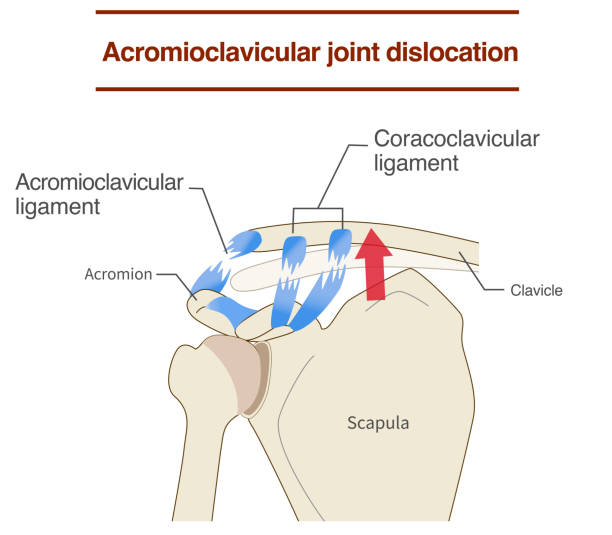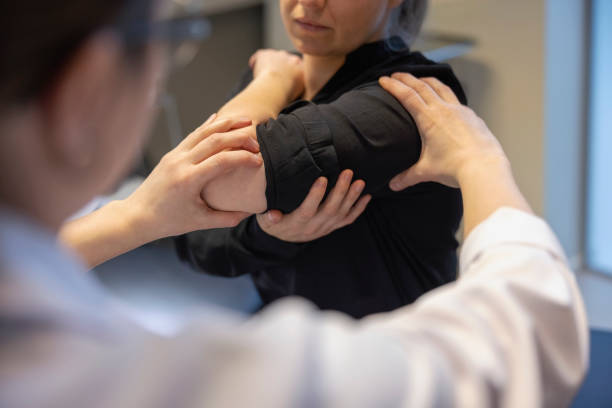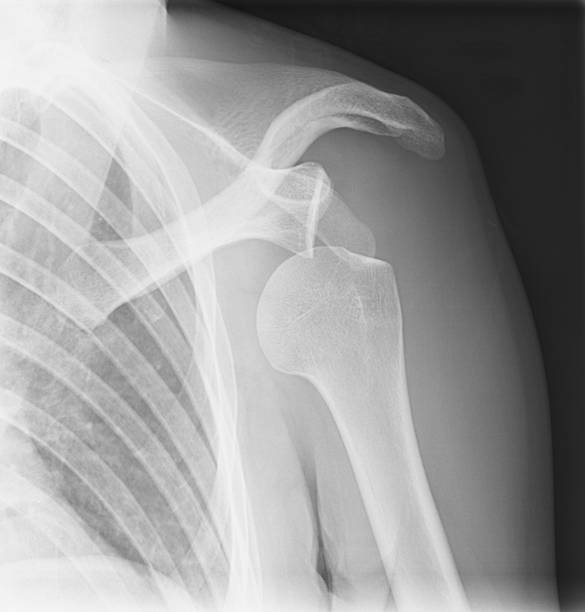10 Best Shoulder Dislocation Rehab Exercises
10 Shoulder Dislocation Rehab Exercises: Strengthening Your Shoulder After Injury
If you’ve experienced a shoulder dislocation, you understand the importance of rehabilitating your shoulder to regain strength and mobility. In this guide, we’ll walk you through some effective exercises specifically designed to help you recover from a dislocated shoulder.
Whether you're looking to prevent future injuries or you're currently in the rehabilitation process, these exercises can make a significant difference in your recovery journey.

Introduction
Shoulder dislocations are common injuries that can occur due to various reasons, including sports activities, accidents, or falls. After a shoulder dislocation, it's crucial to engage in rehabilitation exercises to strengthen the muscles around the shoulder joint and improve stability.
Here are some examples of exercises for you to try. The exercises may be suggested for a condition or for rehabilitation. Start each exercise slowly.
Ease off the exercises if you start to have pain. You will be told when to start these exercises and which ones will work best for you.
How to do the exercises
1. Shoulder Flexion (Lying Down)
For this exercise, you will need a wand. To make a wand, use a piece of PVC pipe or a broom handle with the broom removed. Make the wand about 30 centimeters wider than your shoulders.
Lie on your back, holding a wand with your hands. Your palms should face down as you hold the wand. Place your hands slightly wider than your shoulders. Keeping your elbows straight, slowly raise your arms over your head until you feel a stretch in your shoulders, upper back, and chest. Hold for 15 to 30 seconds. Repeat 2 to 4 times.
2. Shoulder Blade Squeeze
While standing with your arms at your sides, squeeze your shoulder blades together. Do not raise your shoulders as you are squeezing.
Hold for 6 seconds. Repeat 8 to 12 times.
3. Internal Rotator Strengthening Exercise
For this exercise, you will need elastic exercise material, such as surgical tubing or Thera-Band.
Begin by tying a piece of elastic exercise material to a doorknob. Stand or sit with your shoulder relaxed and your elbow bent 90 degrees (like the angle of the letter "L"). Your upper arm should rest comfortably against your side.
Squeeze a rolled towel between your elbow and your body for comfort and to help keep your arm at your side. Hold one end of the elastic band in the hand of the painful arm. Rotate your forearm toward your body until it touches your belly.
Keep your elbow and upper arm firmly tucked against the towel roll or the side of your body during this movement. Repeat 8 to 12 times.
4. Isometric Shoulder External Rotation
Stand with your affected arm close to a wall.
Bend your arm up so your elbow is at a 90-degree angle (like the letter "L"), and turn your palm as if you are about to shake someone's hand.
Hold your forearm and elbow close to the wall. Press the back of your hand into the wall with moderate pressure. Hold for a count of 6.
Repeat 8 to 12 times.
5. Isometric Shoulder Abduction
Stand with your affected arm close to a wall.
Bend your arm up so your elbow is at a 90-degree angle (like the letter "L"), and turn your palm as if you are about to shake someone's hand.
Hold your forearm and elbow close to the wall. Press your elbow into the wall with moderate pressure. Hold for a count of 6.
Repeat 8 to 12 times.
6. Wall Push-ups
Stand against a wall with your feet about 30 to 60 centimeters away from the wall.
Place your hands on the wall slightly wider apart than your shoulders, and lean forward. Gently lean your body toward the wall. Then push back to your starting position. Keep the motion smooth and controlled. Repeat 8 to 12 times.
These exercises are just a starting point for your shoulder rehabilitation journey. It's essential to consult with a healthcare professional before starting any new exercise regimen, especially if you've experienced a shoulder dislocation.
With patience, consistency, and proper guidance, you can strengthen your shoulder and reduce the risk of future injuries.
Advanced Shoulder Dislocation Rehab Exercises and Tips
Now that we've covered some fundamental exercises for shoulder dislocation rehabilitation, let's delve deeper into advanced exercises and additional tips to maximize your recovery.
7. Rotator Cuff Strengthening
The rotator cuff plays a crucial role in stabilizing the shoulder joint, especially after a dislocation. Strengthening these muscles can significantly improve shoulder stability and reduce the risk of future injuries.
- External Rotation with Resistance Band: Sit or stand with a resistance band anchored at waist height. Hold the band with the hand of your affected arm, keeping your elbow bent at 90 degrees and your forearm parallel to the ground. Slowly rotate your forearm outward against the resistance of the band, then return to the starting position. Aim for 8 to 12 repetitions.
- Internal Rotation with Resistance Band: Using the same setup as the external rotation exercise, this time rotate your forearm inward against the resistance of the band. Focus on maintaining proper form and controlled movements throughout the exercise.
8. Shoulder Abduction and Adduction
In addition to flexion and extension, incorporating abduction (moving the arm away from the body) and adduction (bringing the arm back toward the body) exercises can further strengthen the muscles surrounding the shoulder joint.
- Shoulder Abduction with Resistance Band: Stand with the resistance band anchored at floor level. Hold the band with the hand of your affected arm and stand with your side facing the anchor point. Keeping your elbow straight, lift your arm outward to the side against the resistance of the band, then slowly lower it back down. Repeat for 8 to 12 repetitions.
- Shoulder Adduction with Resistance Band: Stand with the resistance band anchored at waist height. Hold the band with the hand of your affected arm and stand with your back facing the anchor point. Pull the band across your body towards the midline, then return to the starting position. Perform 8 to 12 repetitions on each side.
9. Scapular Stability Exercises
Maintaining proper scapular (shoulder blade) stability is essential for overall shoulder health and function. These exercises target the muscles that control the movement of the shoulder blades, helping to improve posture and shoulder mechanics.
- Scapular Retraction: Sit or stand with your arms at your sides. Squeeze your shoulder blades together as if you're trying to hold a pencil between them. Hold for a few seconds, then release. Repeat for 8 to 12 repetitions.
- Scapular Protraction: Start in the same position as the scapular retraction exercise. Instead of squeezing your shoulder blades together, push them apart as far as you can. Hold for a few seconds, then release. Perform 8 to 12 repetitions.
10. Dynamic Stability Exercises
Dynamic stability exercises challenge the shoulder joint to stabilize while in motion, mimicking real-life activities and sports movements.
- Dynamic Plank Rows: Begin in a plank position with your hands on dumbbells or push-up handles. Keeping your core engaged and your body in a straight line, lift one dumbbell off the ground and row it towards your hip, then lower it back down. Alternate sides and perform 8 to 12 repetitions on each side.
- Single-Arm Dumbbell Press: Sit or stand with a dumbbell in one hand, keeping your core engaged and your shoulder blades pulled back. Press the dumbbell overhead until your arm is fully extended, then lower it back down with control. Aim for 8 to 12 repetitions on each side.
Tips for Maximizing Recovery
In addition to performing rehabilitation exercises, there are several tips and strategies you can incorporate to optimize your recovery from a shoulder dislocation:
- Gradually Increase Intensity: Start with light resistance or bodyweight exercises and gradually increase the intensity as your strength and stability improve. Avoid overloading the shoulder joint too soon, as this can lead to re-injury.
- Focus on Proper Form: Pay close attention to your technique during exercises, ensuring that you're performing each movement with proper form and alignment. This not only maximizes the effectiveness of the exercise but also reduces the risk of compensatory movements that can lead to injury.
- Listen to Your Body: If you experience any pain or discomfort during exercises, stop immediately and consult with a healthcare professional. Pushing through pain can exacerbate the injury and delay the healing process.
- Incorporate Rest and Recovery: Allow adequate time for rest and recovery between exercise sessions to allow your muscles to repair and strengthen. Incorporate techniques such as foam rolling, stretching, and massage to alleviate muscle tension and improve flexibility.
- Stay Consistent: Consistency is key to successful rehabilitation. Stick to your exercise routine and follow your healthcare provider's recommendations to achieve the best results.

Conclusion
Recovering from a shoulder dislocation requires patience, dedication, and a comprehensive rehabilitation program. By incorporating a variety of exercises targeting different muscle groups and aspects of shoulder function, you can strengthen your shoulder, improve stability, and reduce the risk of future injuries.
Remember to consult with a healthcare professional before starting any new exercise regimen, especially if you've experienced a shoulder dislocation. With perseverance and proper guidance, you can regain confidence in your shoulder and return to your favorite activities pain-free.
Keep pushing forward, and don't hesitate to seek support from healthcare professionals or physical therapists along the way. Your journey to shoulder recovery is worth the effort, and with the right approach, you can achieve lasting results.

Bullet Point Summary:
- Gradually increase exercise intensity
- Focus on proper form to avoid injury
- Listen to your body and stop if you experience pain
- Incorporate rest and recovery techniques
- Stay consistent with your rehabilitation program
With these advanced exercises and tips, you're well-equipped to take your shoulder rehabilitation to the next level. Stay committed, stay positive, and remember that every step forward is a step closer to recovery.
This comprehensive guide provides you with advanced exercises and valuable tips to maximize your shoulder dislocation rehabilitation. By incorporating these strategies into your routine, you can strengthen your shoulder, improve stability, and reduce the risk of future injuries.
Keep pushing forward, and don't hesitate to seek support from healthcare professionals or physical therapists along the way.
Your journey to shoulder recovery is worth the effort, and with the right approach, you can achieve lasting results.

FAQs
What is a dislocation?
A dislocation is a common injury where the bones in a joint are forced out of their normal position, disrupting the joint's alignment.
What is a dislocated shoulder?
A dislocated shoulder occurs when the arm bone (humerus) pops out of the shoulder socket (glenoid). It's a common type of dislocation and can cause significant pain and limited movement in your shoulder.
What are the best 5 exercises following a shoulder dislocation?
- Shoulder Flexion (Lying Down)
- Shoulder Blade Squeeze
- Internal Rotator Strengthening Exercise
- Isometric Shoulder External Rotation
- Isometric Shoulder Abduction
What are the recommended exercises for a dislocated shoulder?
The recommended exercises for a dislocated shoulder include those that target shoulder strengthening and stability, such as shoulder flexion, blade squeeze, and rotator cuff strengthening exercises.
What should I include in an exercise program for a dislocated shoulder?
An exercise program for a dislocated shoulder should focus on strengthening the shoulder muscles, improving stability, and gradually increasing range of motion. It should include a variety of exercises targeting different muscle groups and aspects of shoulder function.
How can shoulder strengthening exercises help with a dislocated shoulder?
Shoulder strengthening exercises can help stabilize the shoulder joint, improve muscle balance, and reduce the risk of future dislocations. They also help to restore strength and function to the shoulder muscles after injury.
What is the use of an exercise band in shoulder rehabilitation?
An exercise band is often used in shoulder rehabilitation to provide resistance during exercises, helping to strengthen the shoulder muscles and improve range of motion. It can be used in a variety of exercises targeting different muscle groups.
Is shoulder dislocation a common injury?
Yes, shoulder dislocation is a common injury, especially among athletes and individuals who engage in activities that involve repetitive overhead movements or contact sports.
What should I do if I feel any pain during exercises for a dislocated shoulder?
If you feel any pain during exercises for a dislocated shoulder, stop immediately and consult with a healthcare professional. Pushing through pain can exacerbate the injury and delay the healing process.
What movements should be avoided following an anterior shoulder dislocation?
Following an anterior shoulder dislocation, movements that involve raising the arm in front of the body or rotating the arm outward should be avoided to prevent further injury.
What is the treatment for a shoulder dislocation?
The treatment for a shoulder dislocation typically involves reducing the dislocation (putting the bones back into place), immobilizing the shoulder with a sling, and following a rehabilitation program to strengthen the shoulder muscles and improve stability.
In some cases, surgery may be required to repair damaged tissues or ligaments.

Expert Opinion Following Shoulder Dislocation
According to Dr. Pam Mehta from Resilience Orthopedics, following shoulder dislocation, the shoulder may experience pain and instability. This is because a dislocation occurs when the humerus, or upper arm bone, is forced out of the shoulder socket.
This is particularly common in anterior dislocation, where the humerus moves forward.
“Good exercises are crucial for rehabilitation,” says Dr. Mehta. “Exercises using the ‘Rehab My Patient’ software can help strengthen the shoulder and improve flexibility.”
One such exercise is to gently move your arm away from your body at a 90-degree angle, then try to keep your arm in that position. This can be done with the back of the arm supported by a pillow.
Dr. Mehta emphasizes that treatment for dislocation depends on the severity of the injury. “Medicines you take can help manage shoulder pain, but physical therapy is also important. In severe cases, surgery may be required.”
She also advises caution for those involved in contact sports. “Following shoulder dislocation, it’s important to avoid activities that risk forcing the arm back into the socket until the shoulder has fully healed.” https://www.resilienceorthopedics.com/
For More Training Advice + Diet and Lifestyle visit us RIPL Fitness
PS: Make sure you check out the rest of our Shoulders Training Guides:
Supraspinatus Stretch: Your Supraspinatus Muscle & Rotator Cuff
8 Best Compound Shoulder Exercises
Around the World Shoulder Exercises + Workout
5 Frozen Shoulder Exercises For Pain Relief
10 Best trx shoulder exercises | TRX Suspension Training
Shoulder Calisthenics Workout | Bodyweight Shoulder Workout
16 Best Cable Shoulder Exercises To Build Muscle & Shape Delts
8 Best Shoulder Bursitis Exercises
Shoulder Impingement Exercises For Shoulder Impingement Syndrome
The 10 Best Cable Shoulder Workouts & Cable Shoulder Exercises

